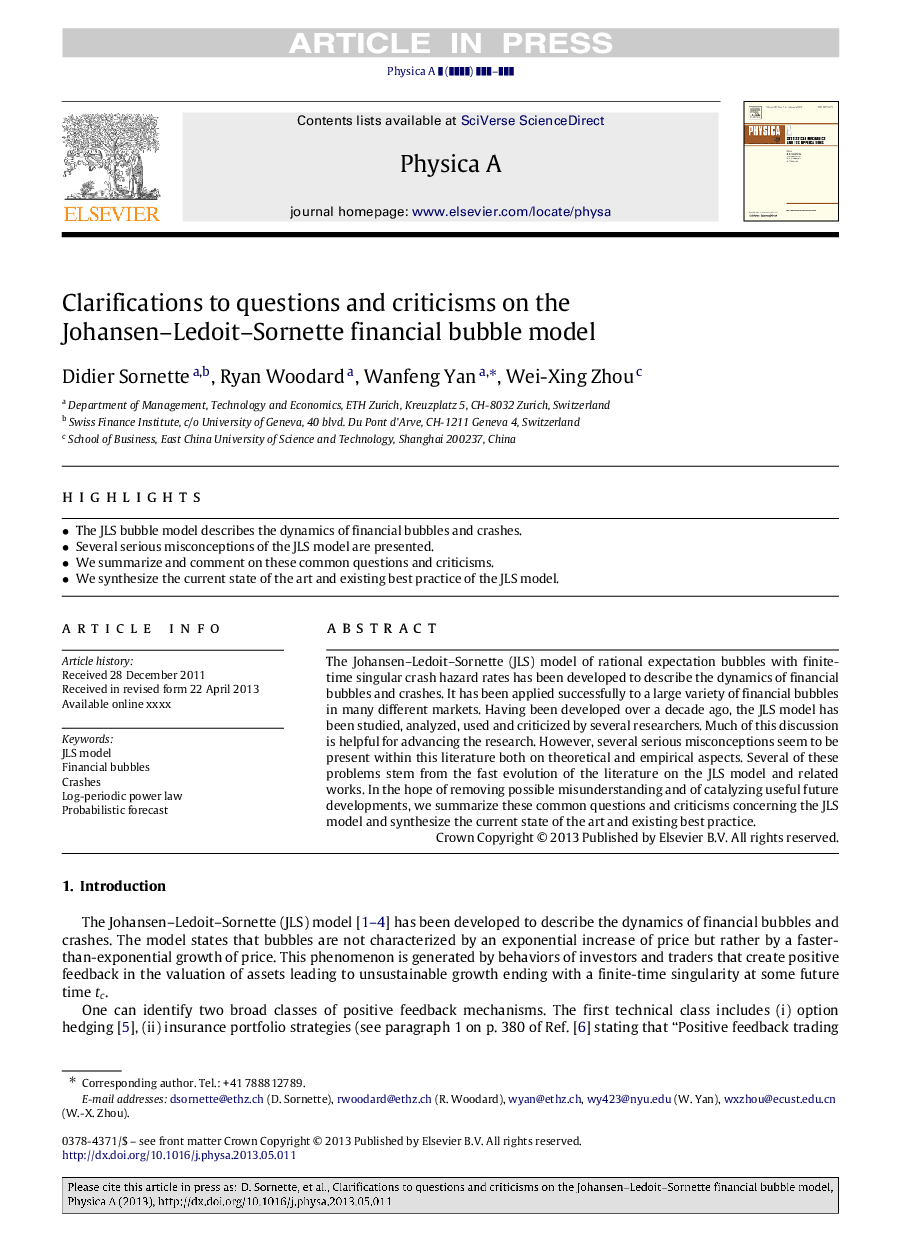| Article ID | Journal | Published Year | Pages | File Type |
|---|---|---|---|---|
| 10481944 | Physica A: Statistical Mechanics and its Applications | 2013 | 12 Pages |
Abstract
The Johansen-Ledoit-Sornette (JLS) model of rational expectation bubbles with finite-time singular crash hazard rates has been developed to describe the dynamics of financial bubbles and crashes. It has been applied successfully to a large variety of financial bubbles in many different markets. Having been developed over a decade ago, the JLS model has been studied, analyzed, used and criticized by several researchers. Much of this discussion is helpful for advancing the research. However, several serious misconceptions seem to be present within this literature both on theoretical and empirical aspects. Several of these problems stem from the fast evolution of the literature on the JLS model and related works. In the hope of removing possible misunderstanding and of catalyzing useful future developments, we summarize these common questions and criticisms concerning the JLS model and synthesize the current state of the art and existing best practice.
Related Topics
Physical Sciences and Engineering
Mathematics
Mathematical Physics
Authors
Didier Sornette, Ryan Woodard, Wanfeng Yan, Wei-Xing Zhou,
